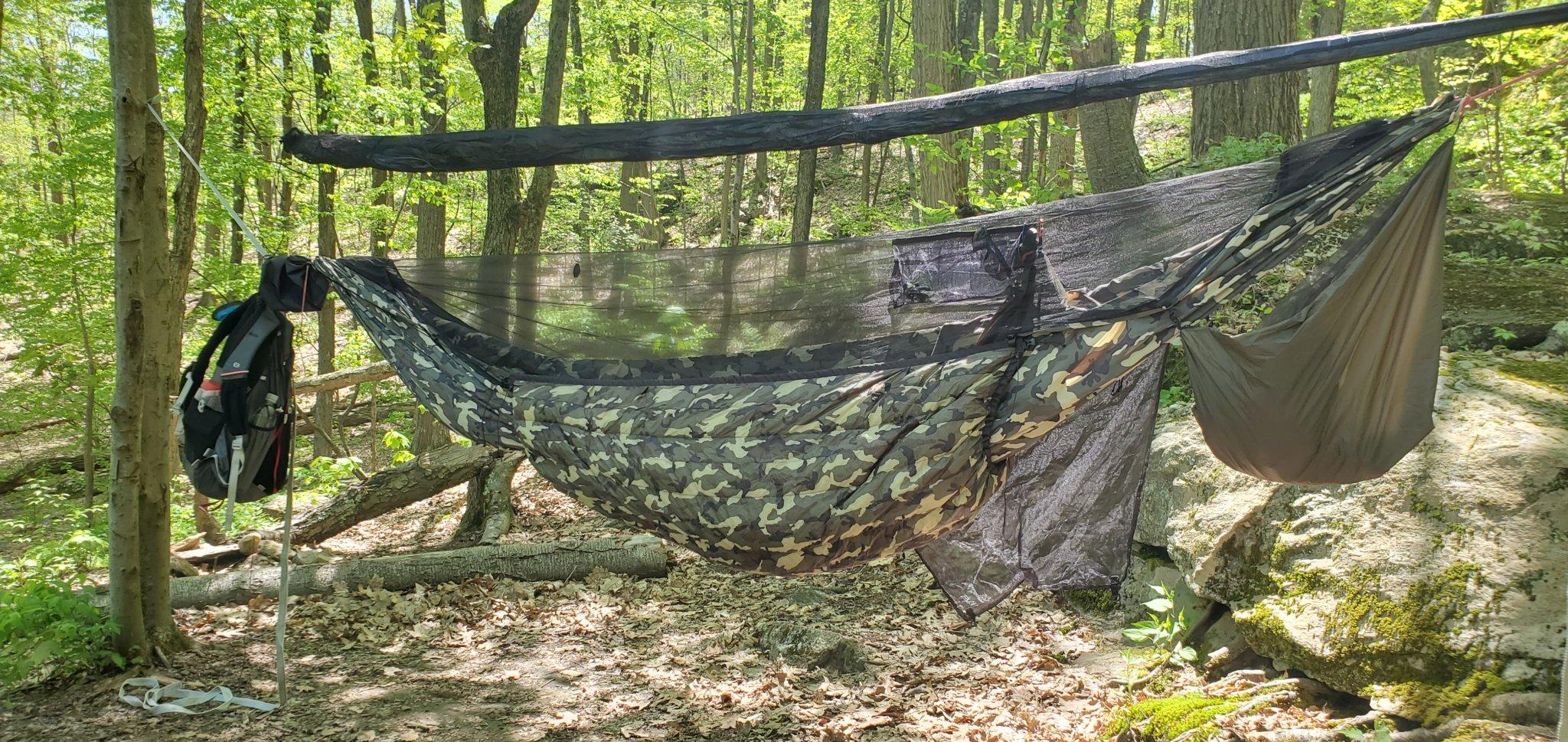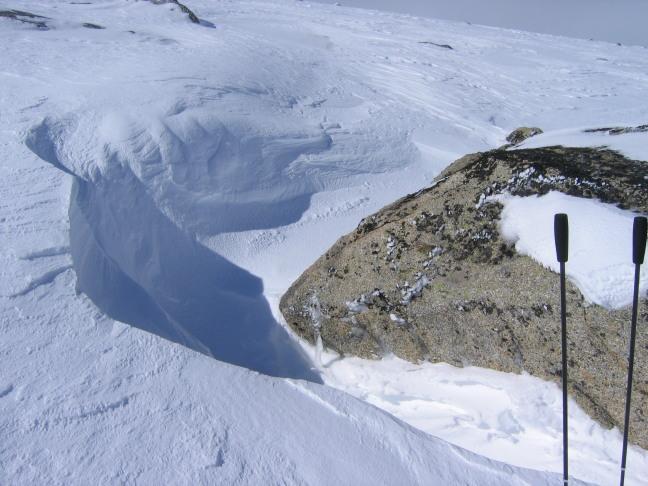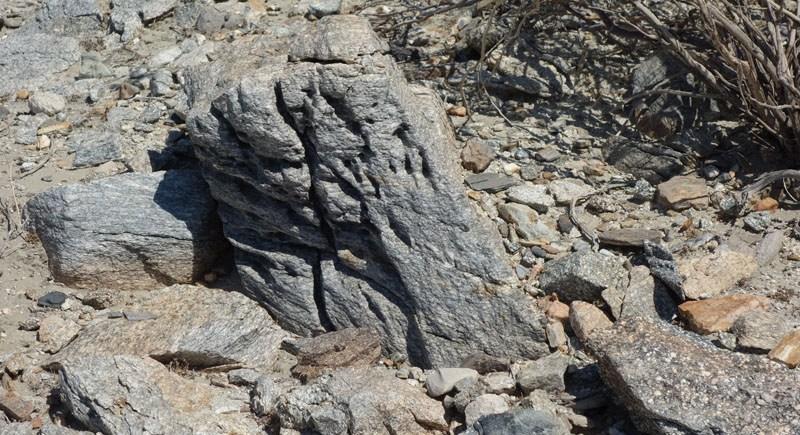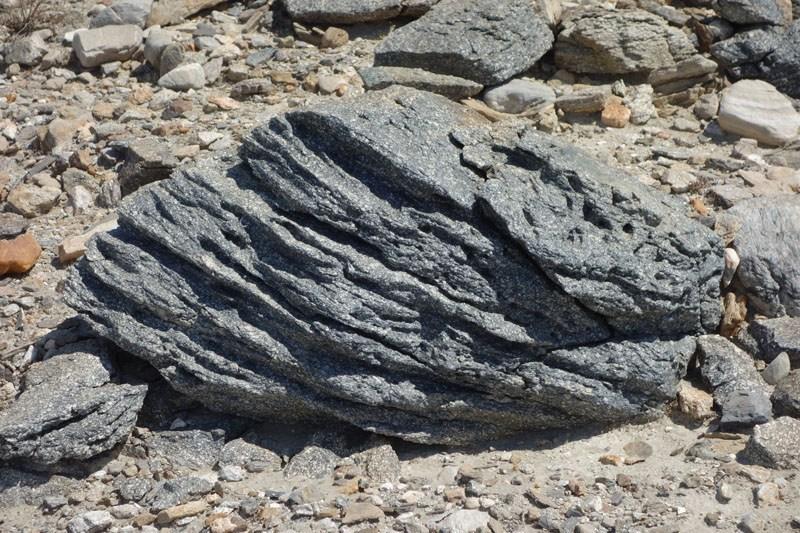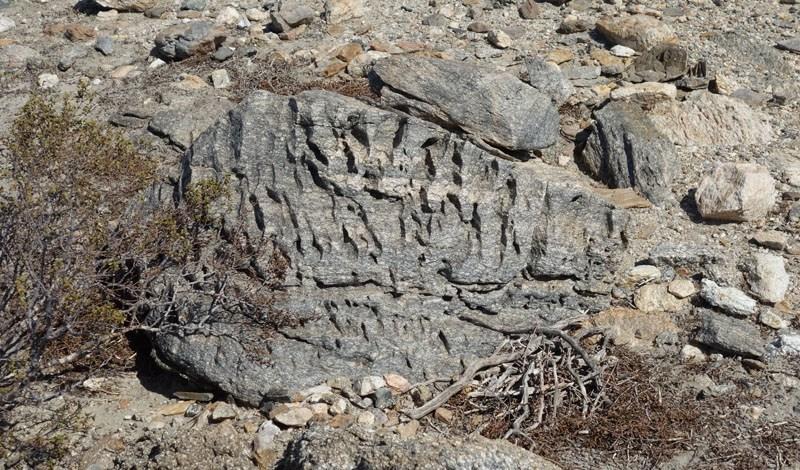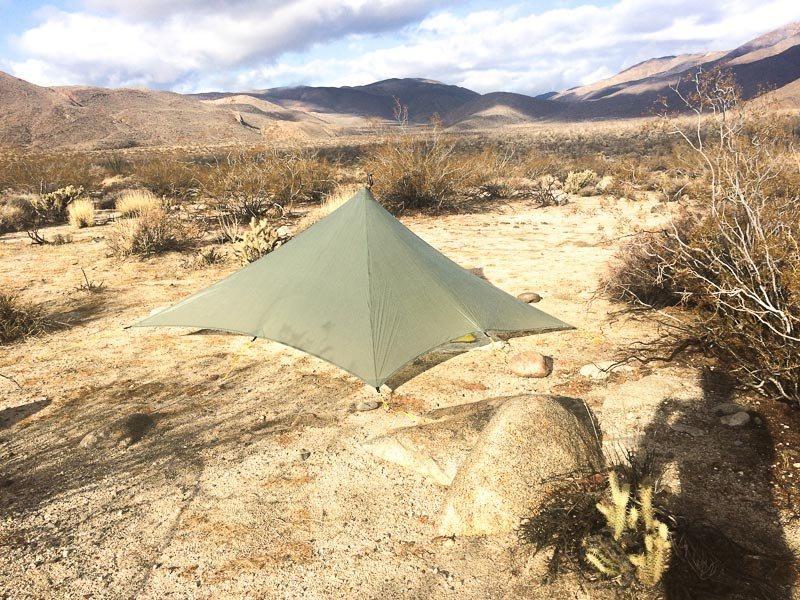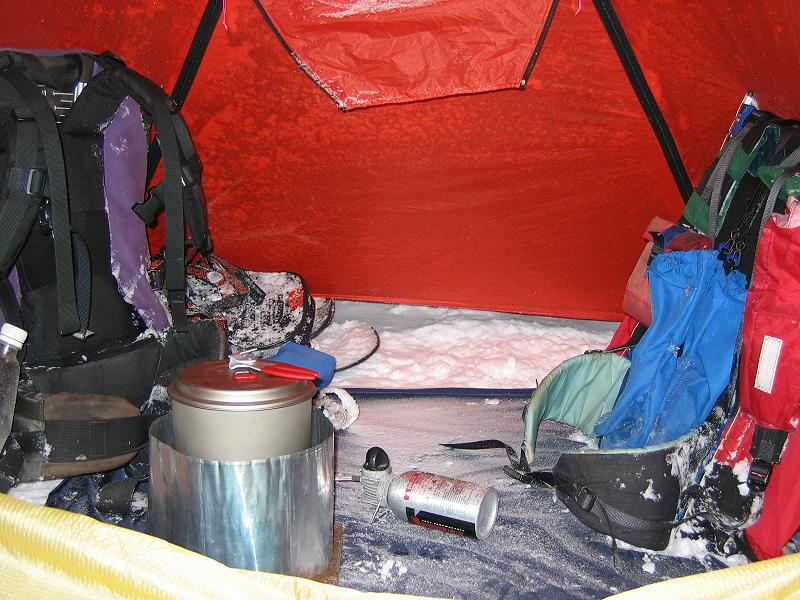Topic
Freestanding > Non-Freestanding Tents??
Forum Posting
A Membership is required to post in the forums. Login or become a member to post in the member forums!
Home › Forums › Gear Forums › Gear (General) › Freestanding > Non-Freestanding Tents??
- This topic has 98 replies, 15 voices, and was last updated 4 years, 5 months ago by
 Roger Caffin.
Roger Caffin.
-
AuthorPosts
-
Aug 23, 2020 at 4:36 pm #3672591
Dirtbag, my guess is that your new tent will have condensation inside the tent inner, at the ends of the tent, due to the fact that the rain fly doesn’t go low enough-it leaves the waterproof ends of the tent exposed to the cold outside air. And since the ends, that are exposed to the outside air, are waterproof (i.e. impervious to water drops and water vapor) I think you’re gonna have condensation at your feet and head in the tent inner. I hope not of course, but that would be my concern. and that has been my experience with tents like the one you show in your photos.
Aug 23, 2020 at 5:21 pm #3672600Honestly.. A little condensation does not bother me much. I find in the Northeast it is almost unavoidable. I have slept in many tents, bivys, under tarps or just cowboy camping .. In the forest, on the beach, next to lakes, rivers and streams and in the meadows or on the mountains.. Summer, fall, winter and spring, rain, fog, snow, wind, heat and humidity. Some nights there is condensation, some nights there is not. It all depends on the forcast, where I am hiking/camping and which shelter I am using. Over the years in different conditions I have adapted to this minor issue. A little condensation will not make or break my trips as I have learned what to do to prevent it as much as possible and when it does happen.. And it will happen.. I have learned to accept it and fix it best I can. Find me someone from the Northeast who has never woken up to a bit of condensation and I would be amazed!! Perhaps if I was doing a long winter trek then condensation would be a bit more of an issue.. But for short trips of 1 night to 1 or 2 weeks.. I can deal. Maybe all my nights using a bivy have put me at peace with this?
And.. for what it’s worth.. My main sleep system is my hammock, which I can say is the least condensation I have ever had.. Close to none actually.
The tent, like I said is a rarity for me the last 3 years or so..
 Aug 23, 2020 at 5:51 pm #3672605
Aug 23, 2020 at 5:51 pm #3672605Hope it works out-please report back!
Aug 24, 2020 at 3:15 am #3672642Nick,
If you’ve brought along the tent as you describe, don’t the stakes go with it in the pack?Yes, but I don’t have to pound them into the ground when sleeping under the stars. People complain about pounding too many stakes with non-free standing shelters ;-)
Aug 24, 2020 at 5:17 pm #3672784Sam said:
I hope more folks will provide Craig with suggestions for the kind of MYOG tent he is looking to design and build to replace the Hexamid.
Actually the tent is designed and built. It will take me a little while to make a proper MYOG post about it though, and I was going to wait until after my first trip with it over labor day weekend anyway. To give you a little tease, my setup including poles comes within 2 Oz of my zpack hexamid setup including stakes…..
Aug 24, 2020 at 6:22 pm #3672802Good topic. As a relative new comer I have less interesting points to add than others here. I however, have owned TWO Nemo Hornets. The first one tore on me the first night I used it…REI replaced it…thats why I can say I own two.
My theory on why the floor tore on me is that the materials are extremely thin so that they can compete in the ever important weight statistic. I now try NOT to tension the floor at all, so that it wont tear. I own a TarpTent Notch which is very similar in weight, yet the materials on the Notch are noticeably thicker. Both tents are like coffins on the inside, but the notch, especially the Fly, is way sturdier. So I think the Nemo overcomes the weight of the poles by using lighter materials.
That said, Hornet vs Notch:
- Hornet is easier to setup. But the Notch is easy too, just a tiny bit harder.
- Hornet warmer, the fly can be let down so that it reduces volume, making the tent ALOT warmer. This is compared to the Notch with the mesh interior. I don’t own the partial solid but I think the partial solid would be warmer as well.
- Hornet quieter, I might have issues with the Notch setup, but I feel it can be noisy in the wind.
- Notch feels Roomier.
- Notch feels rock solid.
However, when compared to a cuben MLD Doumid:
- Doumid is easier to setup.
- The both are plenty warm for me, tie.
- Doumid wins hands down for roominess. You can party in there when it rains.
- Doumid is way more sturdy (I have the cuben one)…it doesn’t feel ultralight at all..very solid.
- Doumid seems to handle wind like a champ. I haven’t used the Nemo in heavy wind but I am only guessing the Doumid is better.
I’d like to add that I’m not an advocate of the cottage industry at all. I think the reputable large manufacturers make equipment that is really good all around…and when you go cottage its about making sacrifices for weight. That is…until I got the pyramid tent. I think the Pyramid tents (or tarps if you want to call them that) are the one thing that is not a sacrifice at all. They are just better by design. Maybe they require more fabric per volume as other have said…but there’s more too it than that measure. The other dual apex (pole) designs are just not as stable/quiet in my opinion. I’m probably doing it wrong, but I find they can flap around. Dome tents (and I am calling the Nemo a Dome tent even if its like a hybrid) are quieter. However, Pyramids are just as quiet and better in almost every other way. So maybe its my personal opinion, but: Pyramid > Dome > Dual Apex.
Aug 24, 2020 at 11:20 pm #3672858Paul S,
That is exactly what happened when I bought an old Sierra Designs tent called a BikeLight. Wet head, wet feet. Could not give it away. So no more purchases after that based on how established the company is.Craig B,
OK, curiousity is whetted. But agree you should wait till tent meets trek.Phong D,
Interesting about Nemo using such a fragile material for a floor. Am planning an MYOG tent that will use RBTR 6.6 30D nylon for the floor, which is one reason is why I’ll never have a tent as light as Craig B’s, but will settle for one less than 2 lbs.Nick,
Think I misunderstood your point. Thanks for making it clear for me.Aug 24, 2020 at 11:49 pm #3672864Tent floors …
We got to Medlow Gap just as the storm broke. (Sydney has big storms sometimes.) We got the tent up fast and got inside.
Now Medlow Gap is flat and hard: it’s a helipad with bulldozer access. The fly kept the rain off us, but the flat hard ground did not encourage water to flow away. We ended up with about 30 mm of water around us, and the groundsheet was, quite literally, floating. A very curious sensation. Fortunately the material was good and the seam sealing was good, and we stayed dry.
I had to improvise a raised platform to cook on, on the ground sheet. It worked, but I was very careful with the stove!
The storm passed, there was a clear sky with a full moon, and a light ground-level fog. It made a dim light everywhere. After some discussion (and after the water went away), we packed up and walked in the glowing fog back to the car. All a bit unreal. (The secret was to never turn any headlights on.)
Good groundsheets MATTER!
Cheers
Aug 25, 2020 at 12:37 am #3672865Re: “Not sure why the outer tent or fly will not perform these functions.”
‘Oh, there are very good reasons why the fly does not (can not) always perform these functions.’ [From Roger’s post above on 11/17/18, referring to wind, chilling breezes, spindrift and falling condensation]OK Roger, you and others have mostly convinced me and will not be using .8 oz 7D for canopy outers, especially now when Extrem Textil has a 1.06 oz 20D silnylon. 0.26 oz/sq/yd weight penalty is not a deal breaker. And have a DWR inner fabric from ET under .8 osy for an inner ceiling. Note that the fabric ceiling fully covers the floor footprint.
I say ‘mostly,’ because I want to use netting for the inner doors, both front and rear, because the ventilation is enjoyable, and also helps a lot with condensation, especially when the weather is sweltering, as comes with a warming planet.
As for spindrift that I “really have to experience … to understand”: Perhaps I won’t have to. But should it be imminent, will figure a way to add on temporary ground flaps. In the meantime, I think a durable outer tent with vestibule covers (albeit not as durable as the floor) that comes right down within a half inch from the ground will handle -10C (14 F) winds; but no, would not be tenting in an exposed area in such conditions. Prefer summer treks for tenting amongst panoramic views. We cope with enough snow right here at home during the winter. Not that daytime snowshoeing isn’t fun on a sunny winter day.
Aug 25, 2020 at 12:59 am #3672866a durable outer tent with vestibule covers … that comes right down within a half inch from the ground will handle -10C (14 F) winds;
It should handle the winds as the grass or ground cover should stick up at least that far and muffle the air flow.But that does not apply in the snow. A 1/2″ gap at ground level WILL let in a lot of spindrift if the wind is blowing (spindrift => wind).

This what the wind can do: it scours away anything it can, even walls of snow blocks. Yes, all that gap around the rock was scoured away by the wind.
Cheers
Aug 25, 2020 at 2:12 am #3672869About 3 miles from our house is an area that frequently has wind gusts over 70 mph. I test shelters up there. It is very sandy and the road gets closed several times a year due to enormous piles of sand on the road. Below an earthmover is removing sand that accumulated over 48 hours. The road is actually paved under all the sand.

What is really interesting is what the sand does to rocks in the area, which are mostly granite. Wind blown sand cuts grooves into the rocks, which are called ventifacts.



Testing my TrailStar below in this windy area. It passed the wind test. Required snow stakes and rocks on top of the stakes. This is the morning and the wind had died down quite a bit compared to the evening before. The back of the shelter is pitched pretty close to the ground, so I didn’t get too much sand inside.

Obviously non-freestanding. 10 stakes with LinLoc 3 and 3mm guys.
It’s silnylon, but doesn’t sag much when wet if it is pitched taut. Below is the morning after a night of rain and you can still see blotches where it hasn’t completely dried yet.

No shelter is perfect. The TrailStar isn’t my favorite shelter, but if I could only have just one shelter, I would pick the TrailStar.
Aug 25, 2020 at 6:43 am #3672879The trail star is pretty neat and definitely nice size. Do you use anything under it depending on the weather and where you are using it?
Looking at freestanding and non freestanding tents/tarps.. going back down the rabbit hole .. AGAIN.. I am getting drawn to the Moment. Tarptent Moment.. i do not own one nor have i used one, but it does look like a good bet as “if I only had one tent to use” . Obviously there is no one perfect tent/tarp for all situations, as we all mostly know by now. I love my hammock.. but there are times when a tent comes in handy.. or a bivy..
Aug 25, 2020 at 10:34 am #3672909The trail star is pretty neat and definitely nice size. Do you use anything under it depending on the weather and where you are using it?
I always use a thin foam pad under my air mattress. The foam pad is waterproof. Most of the time I also us a sheet of polycro. I’m pretty good at picking spots that will drain and not puddle.
I’ve have a Scarp 1, that I bought over 10 years ago. I think it is similar to the Moment, but larger. It has the solid inner with mesh windows. It is a well thought out and impeccably constructed shelter. I only use it in winter when expecting crappy weather and snow.
Aug 25, 2020 at 2:47 pm #3672974I’ve posted about my TrailStar often enough, so here is the TL/DNR summary:
– Unmatched in the wind, OK in light snow
– A beautiful shelter that looks great in the pics
– I enjoy the open outlook, but can close it up with a batwing panel if the weather swings too far round or if I need privacy
– Quite an awkward living space, and doesn’t play well with larger off-the-shelf bivies
– Bit of a pain to pitch at the end of a long day
– Large and airy enough to cook inside in bad weather
– A lot of fabric, so relatively heavy for the usable space, especially when wet
– Very large footprint – can be an issue in woods or steep ground.I used to use it with a bespoke nest, but that was a pain to pitch, quite heavy, and you had to crawl a long way under the tarp to reach it. Having said that, legendary gear reviewer Dave Townsend loves that setup and he knows a thing or two.
Nowadays I mostly just use a space-blanket groundsheet and improvise a net if there are bugs about.
Aug 27, 2020 at 12:36 pm #3673342Re: “a durable outer tent with vestibule covers … that comes right down within a half inch from the ground will handle -10C (14 F) winds;
It should handle the winds as the grass or ground cover should stick up at least that far and muffle the air flow.
But that does not apply in the snow. A 1/2″ gap at ground level WILL let in a lot of spindrift if the wind is blowing (spindrift => wind).”Roger,
Your cautionary tales about wind and spindrift (mostly spindrift), and Nick’s post about blowing sand, got me wondering about sewing the bathtub floor directly to the outer tent somehow; rather than to the inner tent, which could be attached inside to the outer just above the bathtub floor. And there are also the peak vents that could be kept tightly closed.But even assuming that could all be done and would stop fine sand or snow when buttoned up, what happens when the outer door is opened to get in or out, or even just partly opened to get some ventilation and fresh air, especially when cooking?
I’m almost wondering if trekking in such conditions really makes any sense at all, or if so, if a tent should ever be virtually air tight. Should I be?
Aug 27, 2020 at 3:52 pm #3673368Hi Sam
I’m almost wondering if trekking in such conditions really makes any sense at all
Well, to be honest, it does not really make for a comfortable life at the time :) But we do it sometimes.
Maybe because it is lots of fun AFTERWARDS.
Or maybe because we were hoping there would be no storm?
Anyhow, there’s lots of nice fresh snow after a storm.or if so, if a tent should ever be virtually air tight.
NEVER!
The windward end of the tent should certainly be a 100% block against air, other wise you get a lot of spindrift inside the tent.

This happened when I did not have the windward end sealed properly. Too much of that and you start to have a real problem, as you can see. I did fix this when we got home so it does NOT happen any more. (Better sod cloth around the end.)But the lee end of a good tent should not be sealed at all. The wind blowing past will, if anything, suck air out of the tent rather then blow inwards.

You can see the partly open door flap at the top. There was a 100 kph storm going past outside, but nothing was blowing inwards. That means you can have a very reasonable opening at the lee end for getting oxygen in and CO/CO2 out. And there was little air movement inside the tent (in relative terms), and we were quite comfortable.

Cheers
Aug 28, 2020 at 2:49 am #3673440I wouldn’t want a bathtub sewn to the outer fly. But that is a problem with gear — solving one problem sometimes creates a new problem — especially when trying to keep things reasonably light.
Sand can be a nightmare. It gets into everything; food, water, zippers, your eyes, etc. But one isn’t dealing with the cold that occurs in a blizzard.
Aug 28, 2020 at 5:27 am #3673444Again brings us back to.. There is no one all do all perfect tent/tarp, freestanding or not, for every situation. There is always going to be something for someone that doesn’t quit work, or is annoying, doesn’t make sense, is not needed, or just flat out does not work!
Aug 28, 2020 at 12:33 pm #3673506Thanks, Roger, for your thoughts. That clears up a lot. We have posted about wind shift; but I’ve found that 180 degree shifts are extremely rare where I’ve hiked; although suppose there are instances where they do occur. Having tents with vents that are well protected, I button the doors up before bed in case of storms. I did use an unbuttonable tent for a few years. Great space and ventilation, but not for above timberline or other unprotected areas:
After posting, and from Nick’s comments about “nightmare” sand, there came a thought that for some extreme conditions, a light construction mask might be carried. I’ve always had a plastic particle mask for cutting fiberglass, carbon fiber and such (note: no good for covid-the intake filter is great, but what you breath out is not filtered). There are check valves on the exhale ports, and there is no leakage of air around the mask. This might help for severe blowing sand; but then, goggles would be needed also.
D-bag, it sounds like your experiences with tents have been problematic. For ages, I’ve modified tents to remove glitches; so have had almost zero troubles. It helps to start with a good tent; but this Eureka cheapy was very tough to modify. After many years, it started leaking at the peak during torrential rains, and no amount of patching or sealing would fix it. Probably, the fabric coating just wore out:
It was a good tent, though, for a long time, and had a dry pitch; that is, the inner tent was built in, so no rain entered when pitching it. The tents since have been good ones, but are more conventional, and the inner tent must go up first before the fly is attached, often with flooding of the bathtub floor in downpours. Which gave rise to the desire to build a new tent from scratch, using the lightest materials other than DCF, which I’m not sold on and is very expensive (have big doubts whether a DCF tent would last many years). And that is why I’m forever asking about tent design. Don’t want to leave something important out until after the tent is completed and sealed. Did that with a pack that now needs major modifications, and may have to restart from scratch.
Aug 28, 2020 at 1:03 pm #3673509My experiences with tents has been ok, not so much problematic. A hammock is just so much more comfortable for me and easier to find a spot to sleep then in a tent in the ground. Dont get me wrong.. there are plenty of places where a hammock has no business and a bivy/tarp or tent will really shine, which is why i have again.. invested in a few different tents for different occasions. I still have my Black Diamond Bibler I tent. I also have Nemo Dagger 3p and i just picked up the Nemo Firefly 2p and Nemo Hornet 1p.. i am considering packing all 3 of them and going out for a weekend and doing a side by side by side comparison video/review, lol. Of course I can not give a legit longevity review until many more nights in every weather condition possible.. but would be interesting to see a 3p, 2p and 1p side by side by side.
Call me crazy but i also just grabbed a Tarptent Moment DW.. i think i am liking that for some trips where the weather may be more consistent rain.. where as the Freestanding tents would suffice on trips that no rain is expected and i can just use the mesh. The 1p.. (Hornet) i love its size.. a big step up from my bug bivies, and just under or at 2 lbs.. i can manage.
Heck.. i would even consider carrying my hammock and the Hornet!!
Mind you.. all this gear is not just for myself.. my son usually joins me.. sometimes one of my daughters joins us.. and like i posted earlier.. my wife is actually coming out with us next week for first time!!
Sep 20, 2020 at 2:37 pm #3676876As promised a couple weeks ago, here’s the first part of the write-up on my ultralight freestanding tent project:
Sep 22, 2020 at 10:08 am #3677060“I think that Tarptent is the only manufacturer of trekking pole supported non-freestanding shelters that include the stuff sack, guyline, and pegs in the finished weight. Could be mistaken though.”
TarpTent appears to be moving away from this. For their newer products (e.g. Li tents, updated SS1, SS2 etc), they don’t give a total weight but rather they have started doing an itemized list instead:

That’s totally fair. When they do give a total weight elsewhere, it’s recently been for the tent body only (e.g. saying the Aeon is 1 lbs when it’s 17.3oz for the body or 19.5oz with stakes & stuff sack).Including the stakes is a tough one because the stake weight varies so widely depending on how many stakes people use and of what type. I agree not including them is missing something, but adding that weight is hard for one company to do when most competitors aren’t since many customers don’t look closely enough to notice that’s not an equal comparison. I think that’s why TT has switched now that they are making tents that appeal to more hardcore weight geeks: no one cared too much about 2oz when the topic was if the SS2 is 43 or 45oz, but 2oz would appear as a big difference when someone is cross shopping an Aeon Li with a Plexamid.
It’s much like seam taping/sealing. With my seam taped tents we obviously have to include that weight, but then that spec is almost always compared to the pre-seam sealing weights of other tents even though they will gain ~1oz before use. That’s partly why seam taping isn’t that common – you have to pay more to do it, just to make your tents look heavier.
Sep 23, 2020 at 8:27 am #3677155I have several tents (I am too tense). Below treeline I always use a non freestanding tent. Camping above treeline or in the snow, I prefer a freestanding option. My freestanding tent is amazing in exposed conditions and a trust it wholly.
Location: Canadian Rockies.
Sep 23, 2020 at 10:16 am #3677168+1
Sep 23, 2020 at 11:12 am #3677174David U: What free-standing tent do you use above treeline and/or in exposed (wind) locations?
Thanks
-
AuthorPosts
- You must be logged in to reply to this topic.
Forum Posting
A Membership is required to post in the forums. Login or become a member to post in the member forums!
Trail Days Online! 2025 is this week:
Thursday, February 27 through Saturday, March 1 - Registration is Free.
Our Community Posts are Moderated
Backpacking Light community posts are moderated and here to foster helpful and positive discussions about lightweight backpacking. Please be mindful of our values and boundaries and review our Community Guidelines prior to posting.
Get the Newsletter
Gear Research & Discovery Tools
- Browse our curated Gear Shop
- See the latest Gear Deals and Sales
- Our Recommendations
- Search for Gear on Sale with the Gear Finder
- Used Gear Swap
- Member Gear Reviews and BPL Gear Review Articles
- Browse by Gear Type or Brand.

